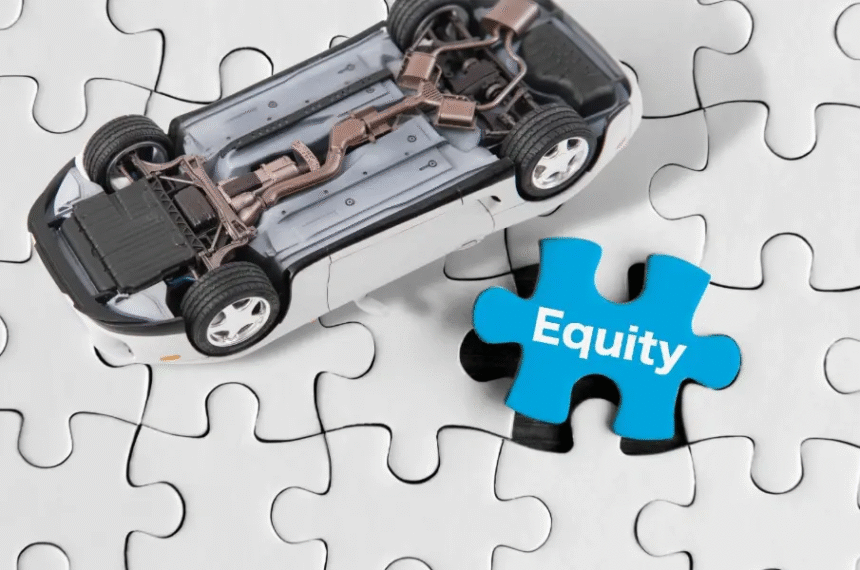When it comes to financing a car, things don’t always go smoothly. Many car owners find themselves facing negative equity auto loans, a situation where the amount they owe on their car loan is higher than what the vehicle is worth. This scenario often arises when cars depreciate quickly, leaving borrowers with a financial gap. If you’re trying to figure out a realistic repayment plan, one of the smartest tools you can use is an auto loan calculator with negative equity.
This guide will walk you step-by-step through understanding auto equity loans, calculating your payments, and making informed financial choices—even in the tricky world of negative equity.
What Does Negative Equity Mean in Auto Loans?
Negative equity happens when your vehicle’s loan balance is greater than its market value. For example:
-
You owe $20,000 on your car loan
-
The current market value of your car is $15,000
-
You are $5,000 upside down on your loan
This financial gap makes it harder to sell, trade in, or refinance your car without digging into your savings. That’s where understanding the right kind of loans and calculators becomes crucial.
Why Auto Equity Loans Matter
An auto equity loan lets you leverage the value of your car as collateral to get a loan—even if you’re still making payments on it. It’s somewhat similar to a home equity loan but is backed by your car instead of your house.
Key benefits include:
-
Accessing cash based on your car’s equity
-
Potentially consolidating high-interest debt
-
Easier approval compared to unsecured loans
If you search auto equity loan near me, you’ll likely find local lenders and credit unions offering such products. However, not every lender handles negative equity situations the same way, which makes accurate calculations extremely important before signing up.
How to Estimate Payments With Negative Equity
If you’re struggling with being upside-down on your auto loan, your first step is to estimate payments with precision. Here’s a step-by-step breakdown:
Step 1: Determine Your Current Loan Balance
Look at your latest loan statement and see how much you still owe. Remember: this is not the same as your monthly payment—it’s the total payoff balance.
Step 2: Find Out Your Car’s Current Market Value
Use trusted websites like Kelley Blue Book (a high-authority, industry-recognized source for car valuations) to check your car’s current value. Enter details like make, model, mileage, and condition.
Step 3: Calculate Your Equity (or Negative Equity)
-
Positive Equity = Market value > Loan balance
-
Negative Equity = Loan balance > Market value
If the balance is higher than the value, you now know how much negative equity you’re carrying.
Step 4: Plug Numbers into an Auto Loan Calculator With Negative Equity
Many online car payment calculators let you input negative equity. This way, it factors in the gap you’re rolling into your next loan when trading in or refinancing.
Example scenario:
-
Loan Balance: $18,000
-
Car Value: $12,000
-
Negative Equity: $6,000
-
New Loan (if refinancing): $18,000 + $6,000 = $24,000
Your calculator will show how this impacts your monthly payments at different interest rates and loan terms.
Step 5: Adjust for Down Payment & Term
If you can add a down payment, it reduces the rolled-in negative equity. Likewise, choosing a longer term lowers monthly payments but increases overall interest.
Strategies to Handle Negative Equity Smartly
Facing negative equity doesn’t mean you’re stuck forever. Here are some options:
-
Make Extra Payments – Adding even small amounts to your monthly payment reduces the balance faster and helps close the gap.
-
Refinance the Loan – A lender offering an auto equity loan may refinance your balance into a more manageable payment plan.
-
Wait It Out – Sometimes the best approach is patience; as your loan balance decreases, your car’s depreciation slows down.
-
Consider a Trade-In with Caution – Some dealerships will roll your negative equity into a new car loan, but this deepens your debt unless the new loan terms are significantly better.
-
Look for Local Lenders – Searching for auto equity loan near me gives you access to nearby credit unions, often with lower interest rates than national banks.
Pros and Cons of Using an Auto Equity Loan
Pros:
-
Quick access to cash without selling your vehicle
-
Flexible repayment options
-
Possible lower rates compared to unsecured loans
Cons:
-
Risk of repossession if you default
-
Interest rates may still be higher than mortgage-backed loans
-
Does not erase negative equity—it may simply restructure it
Avoiding Negative Equity in the Future
To prevent falling into the same financial trap again, follow these tips:
-
Choose Shorter Loan Terms – Aim for 36–48 months instead of dragging payments over 72+ months.
-
Make a Strong Down Payment – At least 20% of the car’s price upfront helps offset depreciation.
-
Avoid Rolling Over Old Debt – Don’t let a dealer bundle your past negative equity into your new loan.
-
Buy Cars with Lower Depreciation Rates – Some models hold value better and save you from instant upside-down balances.
Read More: How to Avoid Getting Trapped in a Negative Equity Auto Loan
Conclusion
Estimating payments with negative equity auto loans may look intimidating, but with the right tools—like an auto loan calculator with negative equity—you can make confident, informed financial decisions.
Whether you’re exploring auto equity loans, refinancing options, or simply searching for an auto equity loan near me, remember that knowledge is your best shield against financial stress. Work with reputable lenders, use calculators to run realistic numbers, and always understand the long-term impact before signing a loan agreement.
Getting out of negative equity takes time, discipline, and strategy—but with the right approach, it’s absolutely achievable. Start today by checking your car’s value, running the numbers, and comparing options that protect your financial health.









